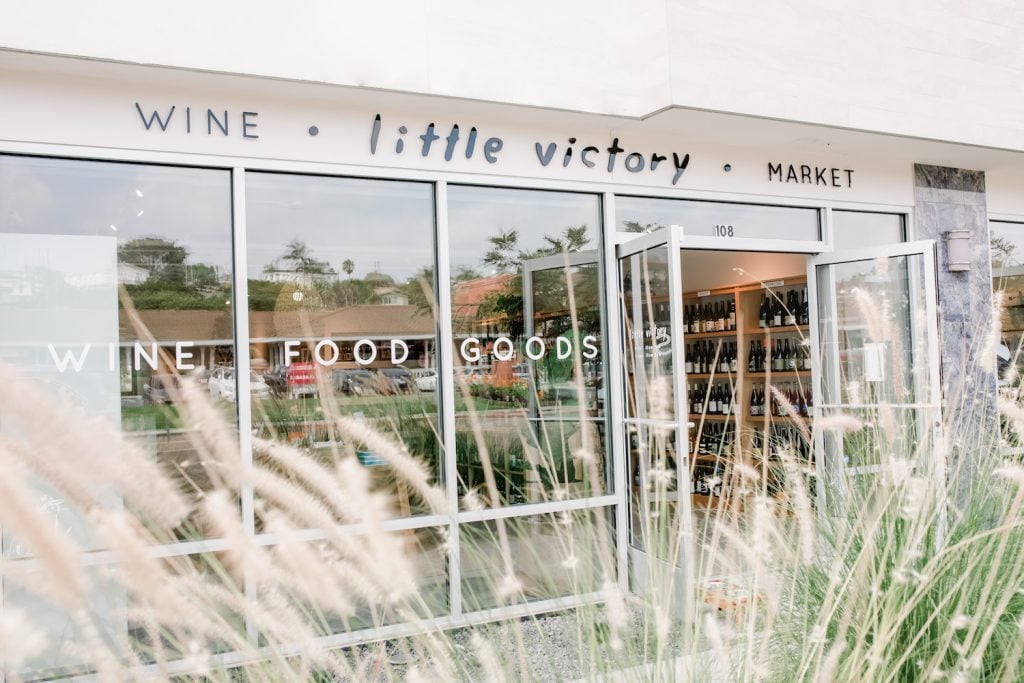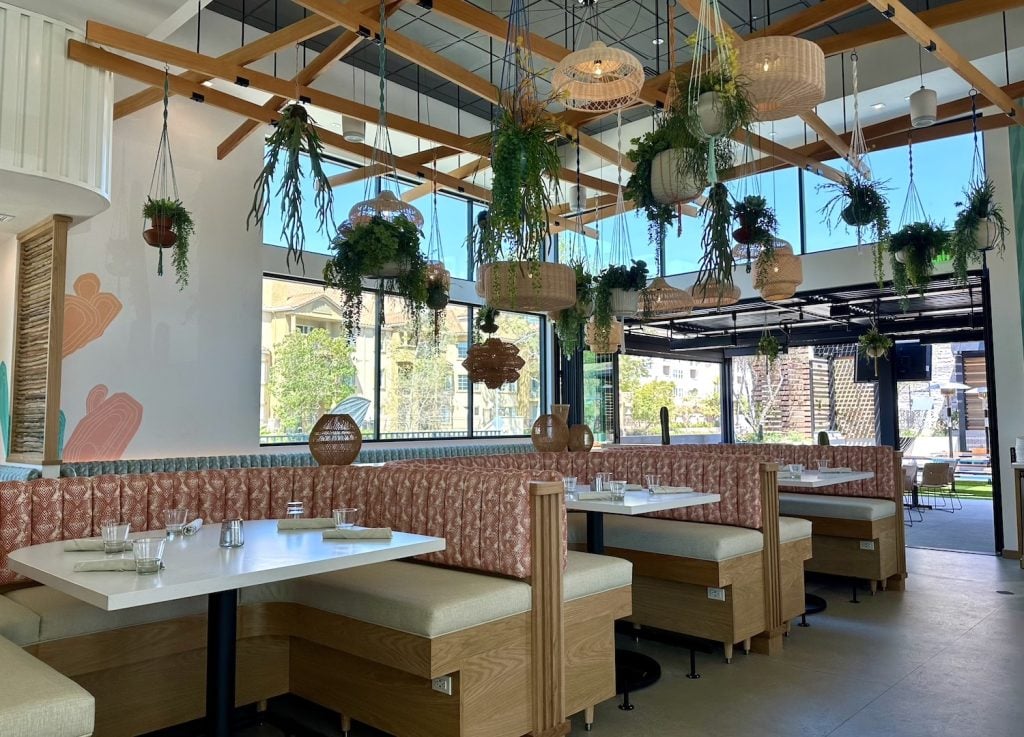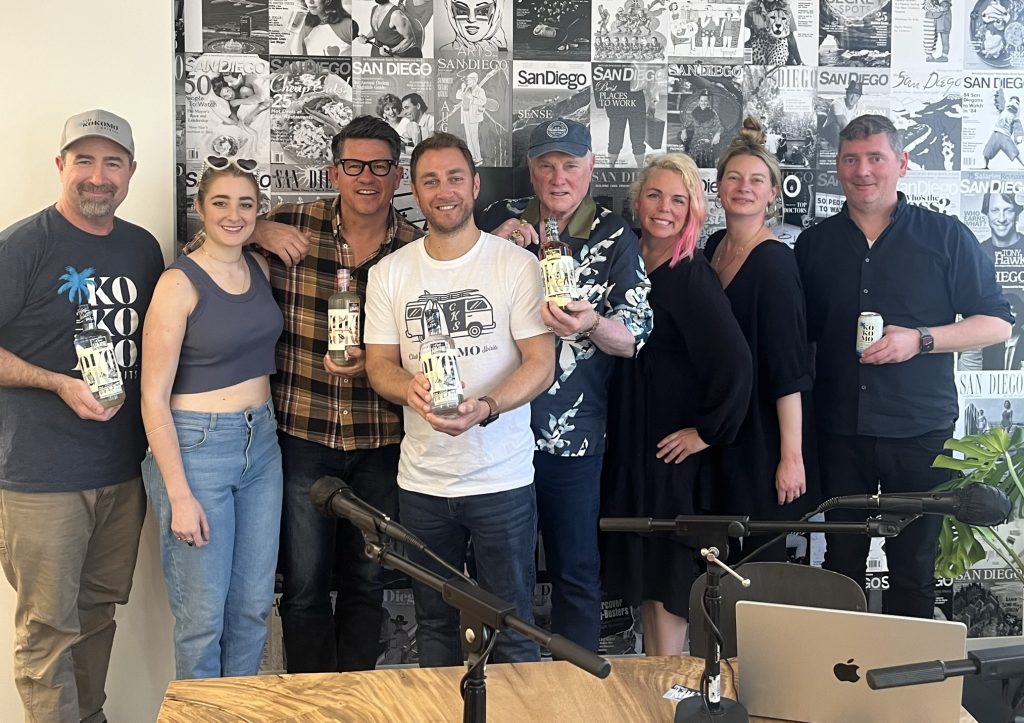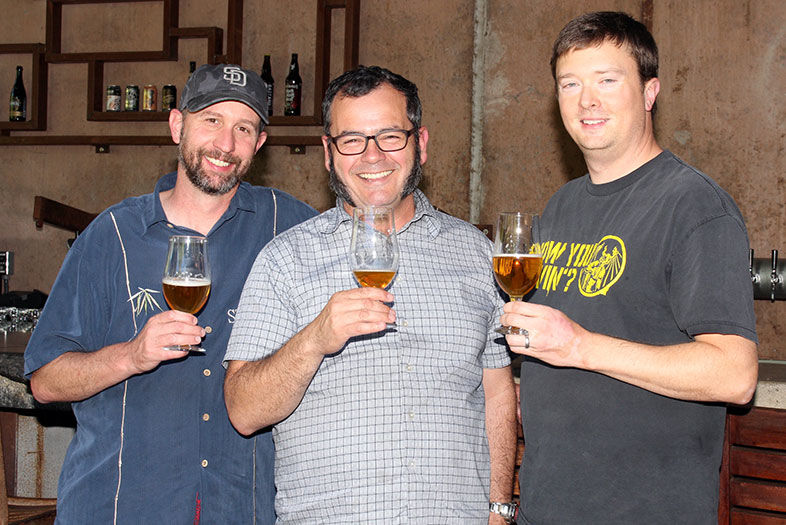When Stone Brewmaster Mitch Steele left the company to start a new venture last year, there was little question about how the brewery would continue its operations. Mitch was a highly respected and beloved figure at Stone—in fact, he is a rock star in the craft beer industry—and he had built a company-wide culture of cooperation and teamwork that was so successful it was sure to thrive even without him there.
During his tenure at Stone, Mitch mentored countless talents on his brew team. Now that he’s gone, those very same talents are the ones in charge of continuing Mitch’s legacy and, in doing so, continuing the growth and success of Stone Brewing Co. At a shady table in Stone’s lush Escondido beer garden, I sat down to chat with the three brewers who are now in charge of overseeing a good deal of Stone’s brewing program: Joel Grosser, Senior Director Brewing Operations; Steve Gonzalez, Senior Manager of Small Batch Brewing & Innovation; and Jeremy Moynier, Senior Innovation Brewing Manager. With a crisp, cold, and (of course) hoppy Dayslayer IPL in hand (a collab with Maine Beer Company), I asked the trio about the Mitch Steele legacy, how innovation happens, and what the specific challenges are in working for an operation as large as Stone is today.
Let’s start back at the point at which Mitch moved on. I assume you guys were all part of the existing team and working under Mitch. Are you all pretty much doing what you were doing then?
Joel: No. Not me. I came to Stone three years ago. I had worked with Mitch early on in my career at Anheuser Busch in New Hampshire. When I came on here three years ago, I came on with a different role, doing process improvement projects and quality and food safety programs. Then I transitioned into what I’m doing now, in brewing operations.
Jeremy: I’ve been here thirteen years. I started over at the old place [San Marcos], and pretty shortly after we moved here, Lee Chase—who was the head brewer at the time—decided to leave and then Mitch came on. I feel very fortunate that I got to work with Mitch for ten years. I learned a lot from him.
Steve: I started working here in 2012, but Lee had offered me a job back in 2002, which I really wanted to take, but I wasn’t able to. Then Mitch offered me a job in 2007, which I unfortunately couldn’t take—I was so close!—and after that I thought it was too bad Stone was never going to hire me after flaking on them so many times!
Jeremy: You know, Mitch always had a really good eye for talent. That story about trying to get Steve is one example, and also getting Joel on board, and several other really talented folks. And so, when he was leaving, he said that he’d already built the team and set everybody up and that we wouldn’t really need to replace him because we already have the talent.
Steve: You know, I told Mitch before I even knew he was leaving that I wanted him to know that I was five times the IPA brewer I used to be. Just the techniques he taught me, he really is my mentor from a brew and IPA standpoint. My ideas about how to brew an IPA were totally different before I started working with him.
Jeremy: He was always very open. He was always someone who said, “If you have an idea, let me know.”
Was that the plan when Mitch left, that you weren’t going to look for one single brewmaster, but instead would have a team?
Steve: I think the plan was to see how it would work.
And so, how is it working?
Jeremy: Well, we haven’t killed each other yet!
Joel: I think it works great. It gave all of us an opportunity to step up into a different role, instead of just one person doing it. It was an opportunity to do something new and different and to take more responsibility.
Are there specific aspects of running the brewery now with a team that work better than before?
Jeremy: In a lot of ways, it hasn’t changed. Steve is still working on the pilot system—and Chris down at Liberty Station is doing the same thing—they’re developing recipes. [Co-founder Steve Wagner is also an integral part of the brewing team, and has taken a more active role since Mitch’s departure.] But I think now we’re a little bit more of an organization and structured a little bit differently, but we can sort of keep tabs on each other. Mitch had to do all that and also run around trying to get our other breweries open in Berlin and Richmond. Now there’s a strong structure and focus.
Joel: From my standpoint, Mitch literally ran the innovation department, he came up with all these new beers, to help Steve and Jeremy and Chris, and he also ran the day-to-day brewery operations and was involved with building the new breweries. Now I think it works a little bit better because each of us has our own little piece of the pie.
Steve: I think our 21st Anniversary beer is a good example of having a good organization. We were looking for something really juicy for a special release out in Richmond, and my focus had been doing a lot of hop research and a lot of botanical research [brewing with things other than hops], and also barrel aging. I was sitting on piles of hop research, and we knew about these two hops varieties that literally taste like orange juice when you dry hop at a rate of about a pound-and-a-half. So I said I was just going to brew a beer with those hops if everyone was cool with it. So I did, and everyone loved it and eventually it became our anniversary release [available August 18 & 19].
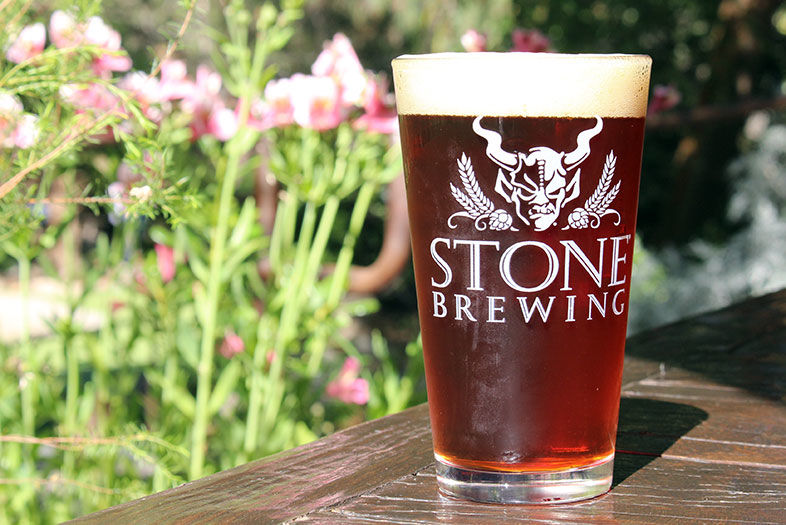
Have a Beer with the Team Stone Trio: Joel Grosser, Steve Gonzalez, and Jeremy Moynier
Pataskala Red IPA is one Stone’s recent hits. | Photo: Bruce Glassman
You guys have all seen a lot of growth here—especially you, Jeremy, since you’ve been here for thirteen years. What are some of the unique challenges working in a brewery of this size? And what’s it like working on a national and international scale?
Jeremy: Yeah, growth is interesting, right? We were in that mode for a long time and it can be very challenging. But you have to be willing to keep looking forward and to weather the bumps that come with that. The good thing is that we’ve always had the same vision—the vision’s never changed. I remember Greg [Koch, co-founder] said a long time ago that he was okay if we kept growing as long as we held true to our vision and didn’t change our ethos. I think we’ve been able to do that, but it doesn’t make it easy.
Steve: I think one of the interesting challenges is that you have to innovate quickly and you’ve got to make sure we’re creating beers with ingredients we can get on a large scale. Most of our releases do go national and even international, so you better have it right. Greg always talks about every beer being a “home run” because, on that scale, you just can’t mess up. When you’ve got that big a market, it’s a lot of beer!
And Stone is such an iconic brand at this point, I’m sure you also feel a lot of pressure not to put a clunker out there with the Stone name on it.
Joel: Consistency, too, is a major challenge. We’re making beer across three different breweries. Arguably, Berlin’s a little different because they have a different raw materials source, but they’re still brewing Stone IPA, and they’re still brewing Go To IPA. So, making sure that Stone IPA is the same beer no matter where you have it—not a “version” of Stone IPA or a “Virginia” IPA—that, to me, is the biggest challenge about growing. Especially when you get to a multi-brewery operation. It’s not an easy thing to do.
Steve: Arrogant Bastard in Germany was an interesting one, because it was an almost identical recipe, but there was a malt that Berlin couldn’t get very easily, and it’s used in that beer, so we actually did a bunch of trial Arrogant Bastard brews on the pilot system here, tasted them blind, picked the one we liked, and that was the recipe that went across the pond to Berlin. Then Greg tasted it and said, “This is amazing beer. Can you guys try to replicate it?” It’s actually very subtle, the difference— I don’t think most people would even pick up on it, but we, of course, taste it all the time.
We’ll taste something and say, ‘Yeah, that’s a great beer, but there’s no way we can do that.’ And then, a minute later, we’ll say, ‘Well, we know we’re going to do that beer. So how do we do it?’
So there’s a “Berlin Arrogant Bastard” as opposed to the original recipe?
Steve: Very subtly different. But I thought that was kind of a cool story.
Keeping with the challenges of scale, are there any kinds of beers or beer projects that you think are just impossible to do on the Stone level at this point?
Steve: We’ve actually accomplished a lot of stuff that I would have deemed impossible to do not that long ago.
Like what, for example?
Steve: Xocoveza. That beer was a nightmare to brew at first, but we actually got really good at it. We dialed in the process and now it’s coming back yearly.
Joel: It’s kind of the beer we judge all others against.
Because of how hard it is to brew?
Joel: Yes. For how hard it is to brew.
What are the complexities of brewing Xocoveza as opposed to other stouts?
Jeremy: A lot of ingredients!
Steve: We’ve got all the spices that go into it—five different spices. And the chocolate—adding that much chocolate to the hot side, that can foul up your equipment very, very quickly. We’ve gotten very good at making sure we clean everything up really well afterwards. You’ve got the heat exchangers and lots of surface area, so you have a lot of chances to clog something up. Chocolate’s really good at that.
Jeremy: A lot of times we’ll taste something and say, “Yeah, that’s a great beer, but there’s no way we can do that.” And then, a minute later, we’ll say, “Well, we know we’re going to do that beer. So how do we do it?”
And then you wind up doing it and people love it, right?
Jeremy: Yeah. Like with our Tangerine Express IPA, which is one of our best sellers now. People are super stoked on that beer. It’s so gratifying to see those reactions. That never gets old, when people are totally jazzed about what we’re doing. That’s really special.

Have a Beer with the Team Stone Trio: Joel Grosser, Steve Gonzalez, and Jeremy Moynier
Stone’s brewing trifecta (from left): Jeremy Moynier, Steve Gonzalez, and Joel Grosser. | Photo: Bruce Glassman

